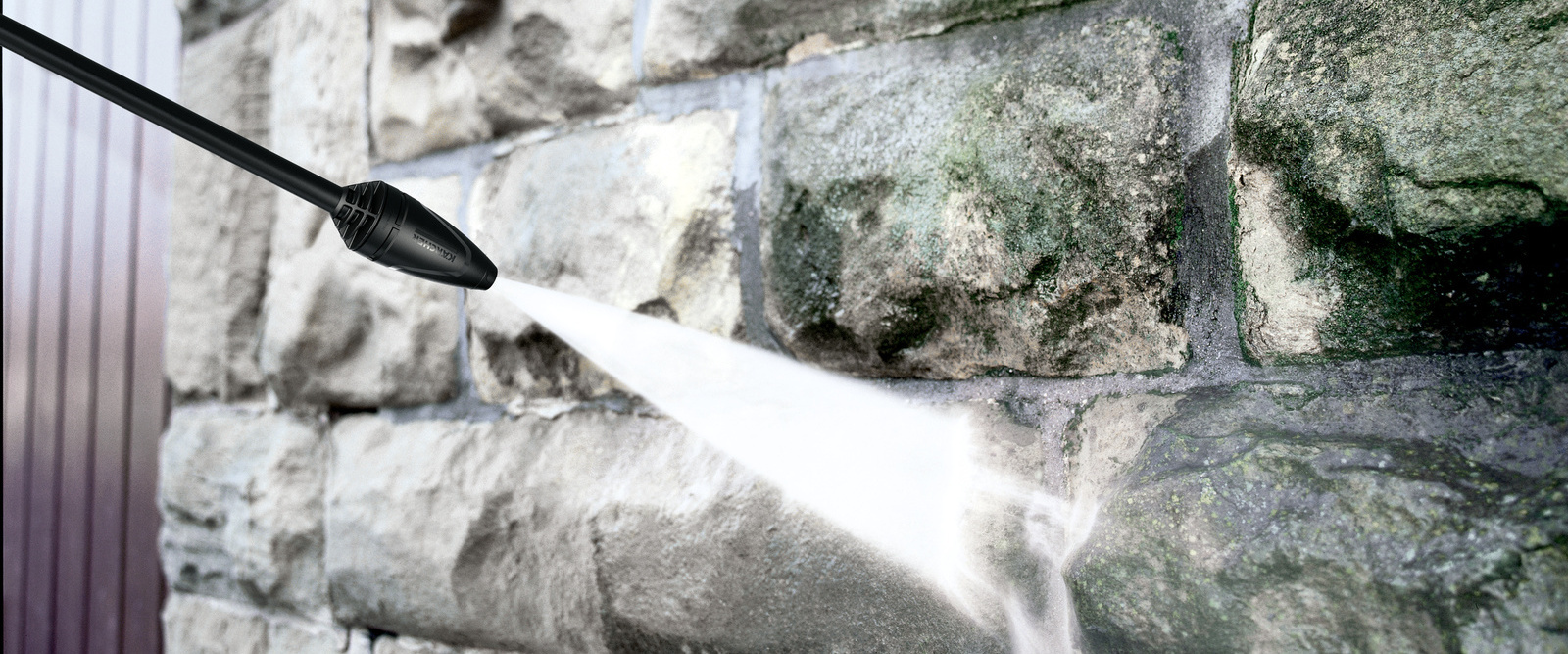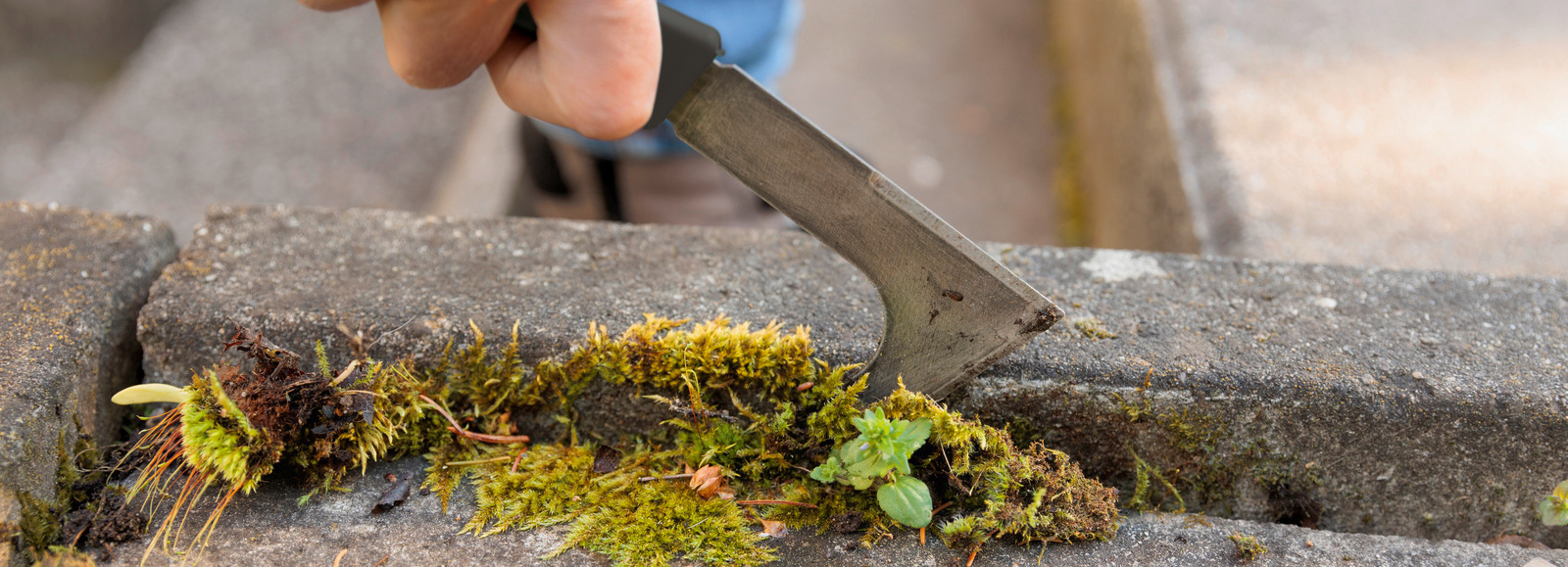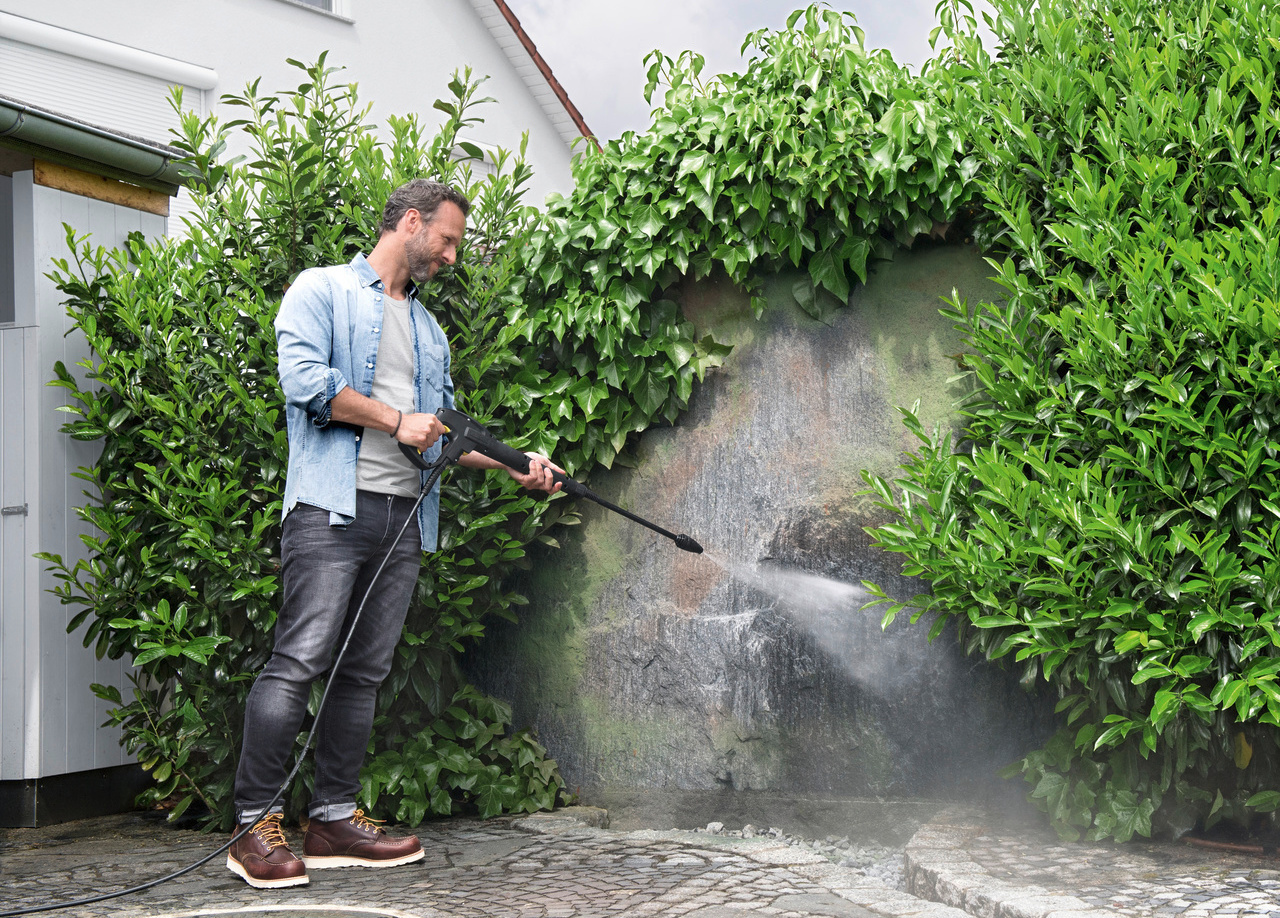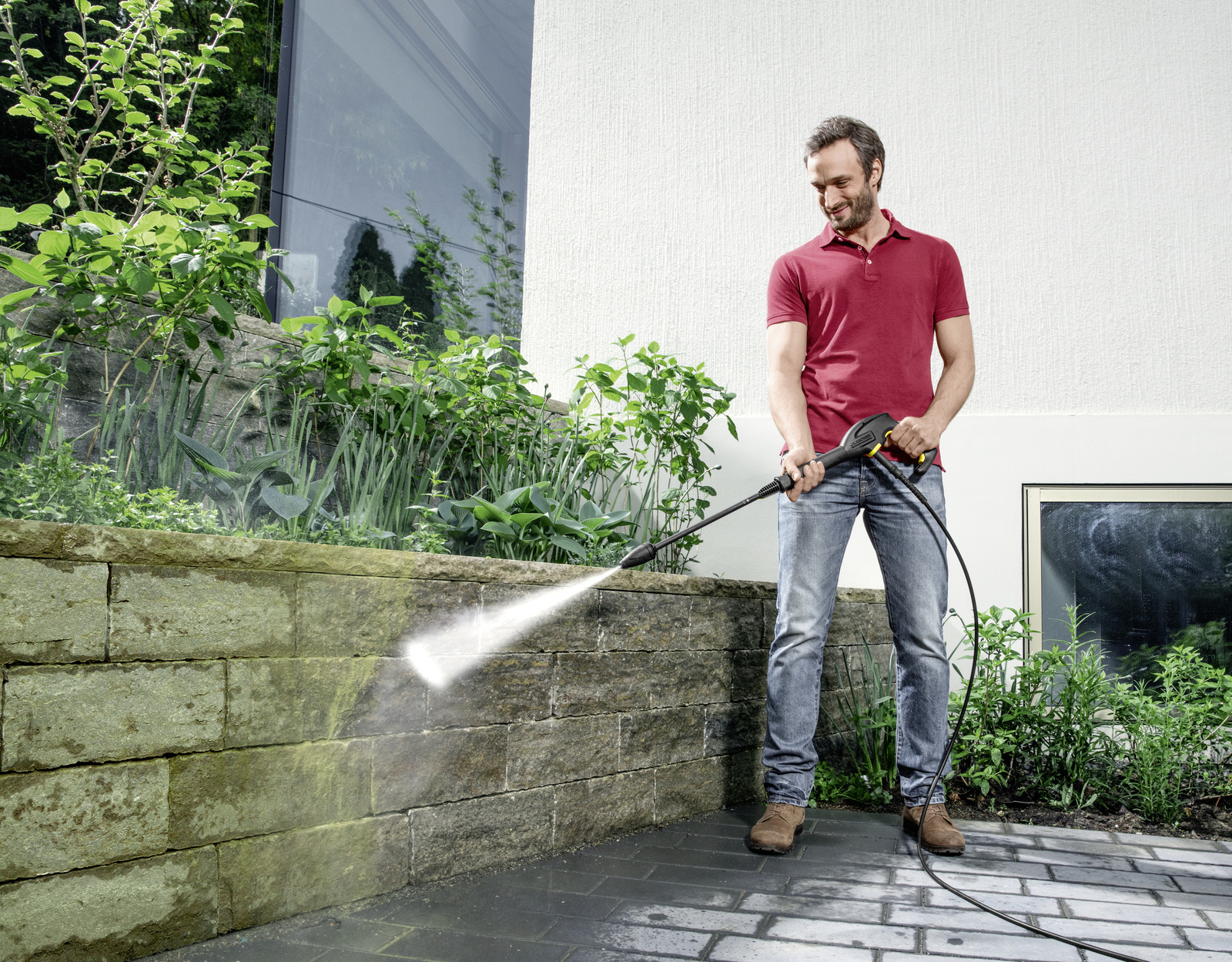Remove moss
In joints and cracks, on house walls, garden furniture, the lawn, and even on the roof: moss thrives everywhere - and consequently also where garden and home owners don’t want it. At some point, the question arises: How do you remove moss easily? Here are the best tips and tricks at a glance.


Remove moss permanently from lawn
A mossy lawn needs some love and attention to get rid of the stubborn spore plant. After all, if a lot of moss has already grown, the grasses may be too weak to stand up to it. The best way to start getting rid of moss is to dethatch the lawn in the spring. This is done by mowing the lawn briefly and then combing it in a checkerboard pattern. A damp, heavily compacted lawn surface should also be aerated. After that, you can still sand the lawn, which is especially useful for shady, damp areas. While this whole process removes the moss, it is actually stressful for the lawn, therefore you should strengthen the grass by using fertiliser afterwards.
Should the moss return after a short time, it is worthwhile analysing the soil. With tests from the garden centre, you can then find out, for example, whether the soil under the grass is overly acidic. An ideal pH value for the soil is 6 to 7. If the value is less than 5.5, you should lime the soil. If it’s not the soil, but the fact that the lawn is growing in a shady spot, it may help to sow a special lawn for shade or opt for other tread-resistant groundcovers. If nothing helps and the moss won’t kill itself, some gardeners also turn to iron fertiliser. This chemical moss remover is effective, but also toxic and should be used with caution. However, there are many moss removers that work on a vinegar essence basis and are a good alternative
Remove moss from smooth surfaces such as walls, patios and garden furniture
For light moss growth on small areas, you can try using cola to remove the stubborn growth. The dark fizzy drink contains phosphoric acid, which attacks the cell structure of the moss and even prevents new moss from quickly taking hold in the same place. In addition, cola is non-toxic and inexpensive. The application is very simple: spray cola on the mossy areas, let it work, wipe or sweep and then rinse with clean water. Since cola should not be diluted, this method is suitable if you want to remove moss from small areas such as individual stones. However, it is not suitable for larger areas, for example, if you want to remove moss from tarmac. In addition, you should not use cola on acid-sensitive floors such as marble or concrete.
If you want to remove moss effectively from large areas, a solution of 10 litres of boiling water and 15 to 20 grams of soda makes the perfect solution. Before applying the solution, roughly remove the moss from, for example, patio pavers you want to clean on a dry day and then spread the soda water over the area with a broom. Ideally, the fizzy drink solution should be left to work for a few days, but if you’re pressed for time, at least five hours will do. Afterwards, the mossy residues can be easily removed with a scrubbing brush. For delicate floors made of marble, natural stone and limestone, a mixture of 15 grams of potassium permanganate and 10 litres of boiling water is suitable. It is used in the same way as the fizzy drink mixture but should first be tried out on an inconspicuous area. Its use is recommended only on impregnated floor coverings, because the potassium salt may not only turn the water brownish purple but also the floor. It is essential to wear gloves when working.


Moss can be removed thoroughly and quickly from small and large surfaces with a pressure washer. Stairs and patio slabs, for example, are cleaned quickly and safely. A pressure washer with a dirt cutter is best, as it removes not only the moss on the surface, but also the barely visible deposits in the pores of the floor. Cleaning is done in three simple steps:
1. Depending on the model, attach the dirt cutter to the pressure washer or set the nozzle on the jet pipe to rotational jet.
2. Hold the water jet at a slight angle over the ground and slowly guide it over the mossy areas while keeping a distance of 15-20 cm.
3. Then sweep up and dispose of the moss.
Moss remover for roof?
Opinions differ on whether it makes sense to remove moss from a roof. Some say that it could damage the roof, while others see an advantage in moss as it retains moisture. This would avoid overloading the drains during heavy rain fall. Of course, you can also choose to leave the moss on the roof, or remove it for aesthetic reasons.
So it’s an individual decision, but if you decide to remove the moss and thus expose the roof, keep your safety in mind. You can easily slip on the moss, especially on a sloping surface, and should therefore always secure yourself with a harness. If you aren’t feeling too confident, then it is best to hire a company to clean it. But if safety is ensured, you can remove the moss on the roof in the same way that you remove moss from the patio and paving slabs, i.e. using brushes and a pressure washer.




